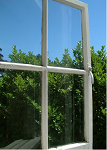General UARS Discussion
Re: General UARS Discussion
-SWS,
I am more than a little confused about the WOB thing. Are you thinking about WOB in terms of its causing measurable arousals and affecting architecture? Or are you thinking of WOB in terms of its causing fatigue from muscle effort and brain focus? Or are you thinking more along the lines of measuring it as a way of determining efficacy of treatment? Or am I, as too often happens, missing the point entirely?
I am more than a little confused about the WOB thing. Are you thinking about WOB in terms of its causing measurable arousals and affecting architecture? Or are you thinking of WOB in terms of its causing fatigue from muscle effort and brain focus? Or are you thinking more along the lines of measuring it as a way of determining efficacy of treatment? Or am I, as too often happens, missing the point entirely?
Re: General UARS Discussion
I'm thinking heightened WOB may impact both of those categories along these lines:jnk wrote:Are you thinking about WOB in terms of its causing measurable arousals and affecting architecture? Or are you thinking of WOB in terms of its causing fatigue from muscle effort and brain focus?
This is already measured and known when excessive respiratory effort ("excessive WOB") shows up during a polysomnogram as recorded FL, RERA's, and even excessive negative esophageal pressure via PES measurement. If that's the extent of WOB-related pathology, then there's really no need to experimentally search for any other WOB-related factors IMO. However....jnk wrote:WOB in terms of its causing measurable arousals and affecting architecture?
Those are additional symptoms that COPD patients sometimes report. Sometimes COPD flareups will occur during the daytime, causing those symptoms to occur. In that latter example we can attribute the daytime onset of those symptoms you described to something other than mitigated RERA's or avoided sleep-stage shifts. Sleep is not involved but sudden fatigue can be involved even without significant SpO2 desaturation. So perhaps we can attribute those sudden-onset daytime symptoms to the sudden onset of increased WOB in those COPD patients more than anything else. If so, then there just may be more WOB-related pathology to look for in the ordinary SDB patient population---especially the UARS subset.jnk wrote:WOB in terms of its causing fatigue from muscle effort and brain focus?
So that last daytime-onset COPD scenario is the basis of my wondering if Dr. Krakow's patients are really experiencing significant sustained benefits to having their sustained respiratory effort decreased via that perfectly sinusoidal flow-curve (reflecting minimized neuromuscular WOB). And if so, do those sustained WOB-reduction benefits come from any areas besides just RERA avoidance and sleep-stage-shift avoidance?
In other words, what benefits might those perfectly-rounded, highly-efficient sinusoidal energy transfers (reflecting absolute minimal WOB) buy besides just helping sleep? Might there be additional presently-unmeasured biologic benefits by Dr. Krakow's methodical and highly-efficient neuromuscular "respiratory unloading"? That first part you asked about is an absolute given IMO. And if that's as far as the benefits go (improved RERA's/architecture) , then hiking the pressure waaaay up there is probably unnecessary in my opinion as well (not just rested gal's). In that case clinicians need only hike the pressure as high as it takes to mitigate arousals and consolidate sleep architecture. Period. But if the perfect sinusoids are genuinely buying Dr. Krakow's patients noticeable benefits, then that may be because there are other presently-unmeasured benefits occurring by that minimized WOB.
Last edited by -SWS on Tue Mar 24, 2009 7:39 pm, edited 1 time in total.
Re: General UARS Discussion
SWS
That work being done by the Korean team is pretty intricate - I am sitting here at the moment sucking in air through my own impaired nasal structure which seems to have got more restricted since eating my lunch sandwich (chicken & beetroot in wholegrain bread - no butter ). Again if I use thumbs & forefingers to open my nares airflow seems a breeze by comparison.
I can see what these guys mean by the added issues from a restricted nasal orifice & problem turbinates. Actually I can feel what they mean
Their model seems very very detailed.
DSM
#2 Hmmmm, why would a chicken & beetroot sandwich cause my nose breathing to be affected ??? - that is both a puzzle and a worry !!!.
That work being done by the Korean team is pretty intricate - I am sitting here at the moment sucking in air through my own impaired nasal structure which seems to have got more restricted since eating my lunch sandwich (chicken & beetroot in wholegrain bread - no butter ). Again if I use thumbs & forefingers to open my nares airflow seems a breeze by comparison.
I can see what these guys mean by the added issues from a restricted nasal orifice & problem turbinates. Actually I can feel what they mean
Their model seems very very detailed.
DSM
#2 Hmmmm, why would a chicken & beetroot sandwich cause my nose breathing to be affected ??? - that is both a puzzle and a worry !!!.
xPAP and Quattro std mask (plus a pad-a-cheek anti-leak strap)
Re: General UARS Discussion
Agreed. It's a three-dimensional fluid dynamics model that's not intended for spur-of-the-moment indexing by any practicing doctor. Something like that might one-day be incorporated into an algorithmically-based diagnostic screening or indexing device.dsm wrote:Their model seems very very detailed.
That model is really used to determine precisely where upper-airway orthodontic or surgical corrections might best be affected. I don't think that degree of three-dimensional fluid-dynamics localization would be necessary toward devising a basic upper-airway-resistance numeric component----a numeric component might in turn be incorporated in an overall predictive WOB index.... if that's even feasible. The breathing and discussion in this thread are purely spontaneous.
Food allergy to the beetroot or bread? Incidental allergy exposure to something other than the sandwich?dsm wrote:#2 Hmmmm, why would a chicken & beetroot sandwich cause my nose breathing to be affected ??? - that is both a puzzle and a worry !!!.
Last edited by -SWS on Tue Mar 24, 2009 8:26 pm, edited 1 time in total.
Re: General UARS Discussion
RE the sandwich - I was very conscious of my nasal breathing prior to walking over to the cafeteria & buying lunch. I had done that thumbs & forefinger check a few times. Then while sitting here having eaten it was aware of faint whistling noises then realized it was my nose while breathing out. Did the nares check & again free air. That was when I posted the comment. I have been checked for allergies & dust was the one that showed up. The change in breathing Is still noticeable. Interesting.-SWS wrote:Agreed. It's a three-dimensional fluid dynamics model that's not intended for spur-of-the-moment indexing by any practicing doctor. Something like that might one-day be incorporated into an algorithmically-based diagnostic screening device.dsm wrote:Their model seems very very detailed.
That model is really used to determine precisely where upper-airway orthodontic or surgical corrections might best be affected. I don't think that degree of three-dimensional fluid-dynamics localization would be necessary toward devising a basic upper-airway-resistance numeric component----a numeric component might in turn be incorporated in an overall predictive WOB index.... if that's even feasible. The breathing and discussion in this thread are purely spontaneous.
Food allergy to the beetroot or bread? Incidental allergy exposure to something other than the sandwich?dsm wrote:#2 Hmmmm, why would a chicken & beetroot sandwich cause my nose breathing to be affected ??? - that is both a puzzle and a worry !!!.
DSM
xPAP and Quattro std mask (plus a pad-a-cheek anti-leak strap)
Re: General UARS Discussion
Apparently someone thought it was feasible and worthy of a patent:-SWS wrote: ...an algorithmically-based diagnostic screening or indexing device. ... an overall predictive WOB index.... if that's even feasible.
Method and apparatus for predicting work of breathing by Neil R. Euliano et al
Another case of been there... almost done that. This implementation is really intended to adjust ventilatory support on-the-fly. It's not really a predictive screening or diagnostic tool.above patent abstract wrote: A method of creating a non-invasive predictor of both physiologic and imposed patient effort from airway pressure and flow sensors attached to the patient using an adaptive mathematical model. The patient effort is commonly measured via work of breathing, power of breathing, or pressure-time product of esophageal pressure and is important for properly adjusting ventilatory support for spontaneously breathing patients. The method of calculating this non-invasive predictor is based on linear or non-linear calculations using multiple parameters derived from the above-mentioned sensors.
Re: General UARS Discussion
SWS-SWS wrote:Apparently someone thought it was feasible and worthy of a patent:-SWS wrote: ...an algorithmically-based diagnostic screening or indexing device. ... an overall predictive WOB index.... if that's even feasible.
Method and apparatus for predicting work of breathing by Neil R. Euliano et al
Another case of been there... almost done that. This implementation is really intended to adjust ventilatory support on-the-fly. It's not really a predictive screening or diagnostic tool.above patent abstract wrote: A method of creating a non-invasive predictor of both physiologic and imposed patient effort from airway pressure and flow sensors attached to the patient using an adaptive mathematical model. The patient effort is commonly measured via work of breathing, power of breathing, or pressure-time product of esophageal pressure and is important for properly adjusting ventilatory support for spontaneously breathing patients. The method of calculating this non-invasive predictor is based on linear or non-linear calculations using multiple parameters derived from the above-mentioned sensors.
Never mind its the thought that counts
DSM
xPAP and Quattro std mask (plus a pad-a-cheek anti-leak strap)
-
Blue Waters
- Posts: 46
- Joined: Mon Feb 22, 2010 9:30 am
Re: General UARS Discussion
I was posting this in another thread regarding my girlfriend's sleep study:
viewtopic.php?f=1&t=52027&st=0&sk=t&sd=a
AHI = 2.6 (total two obstructive apneas and 15 hypoapneas)
RDI = 5.7
RERA Count = 20
RERA Index = 3.1
O2 Saturation Average = 97.4%, Lowest = 91.0%
Fellow poster echo commented that she might have UARS. Do these readings look familiar to anyone regarding UARS?
Thanks.
viewtopic.php?f=1&t=52027&st=0&sk=t&sd=a
AHI = 2.6 (total two obstructive apneas and 15 hypoapneas)
RDI = 5.7
RERA Count = 20
RERA Index = 3.1
O2 Saturation Average = 97.4%, Lowest = 91.0%
Fellow poster echo commented that she might have UARS. Do these readings look familiar to anyone regarding UARS?
Thanks.
_________________
| Mask: Swift™ FX Nasal Pillow CPAP Mask with Headgear |
| Humidifier: S9™ Series H5i™ Heated Humidifier with Climate Control |
- Fitness Seeker
- Posts: 39
- Joined: Wed Aug 03, 2011 5:37 pm
Re: General UARS Discussion
Thanks for bumping this, FS. I've been looking all over this site for a subset of the larger forum, specifically on UARS.Fitness Seeker wrote:1
Epworth Sleepiness Scale: 14
Diagnostic study: overall AHI: 0.2 events/hour; overall RDI: 45 events/hour
Titration study: AHI: 6.1; RDI: 27; CPAP pressures: 5-8cm
Not-tired behind my eyes and with a clear, cool head!
Diagnostic study: overall AHI: 0.2 events/hour; overall RDI: 45 events/hour
Titration study: AHI: 6.1; RDI: 27; CPAP pressures: 5-8cm
Not-tired behind my eyes and with a clear, cool head!










